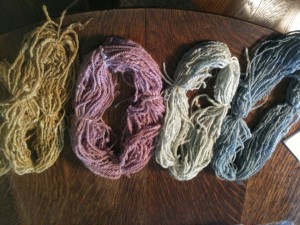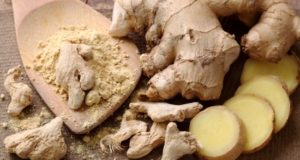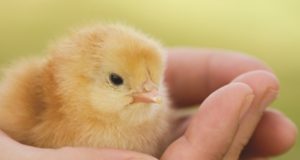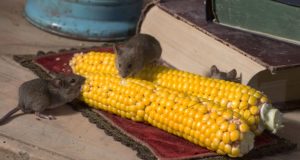 Dyeing yarns and fabrics can be creative and enriching, especially if you have raised the wool and spun the yarn or woven the fabric. While your garden is growing, you may be able to imagine the bounty of your harvest simmering in large enamel pots, releasing their hues onto the gently moving skeins of wool bathing in the colored water. The end results will be yards of beautiful, pleasant colors that will become clothing for your family and friends.
Dyeing yarns and fabrics can be creative and enriching, especially if you have raised the wool and spun the yarn or woven the fabric. While your garden is growing, you may be able to imagine the bounty of your harvest simmering in large enamel pots, releasing their hues onto the gently moving skeins of wool bathing in the colored water. The end results will be yards of beautiful, pleasant colors that will become clothing for your family and friends.
Materials
Before getting started, you will need a few supplies:
- Fibers – wool, cotton, linen and silk can be dyed. Wool is the easiest. (These directions assume you are dyeing wool.) Finished fabrics can also be dyed, though it is more difficult to achieve even color distribution throughout the cloth.
- Cotton thread – skeins should be loosely tied so they can be boiled, yet be recovered as skeins.
- Soap – mild dish detergent or soap for washing skeins free of all grease and dirt, else the mordants may repel dyes.
- Water – lots of water, preferably soft. Minerals in hard water may affect the clarity of your dye. Rainwater is ideal if you can collect it. If you use hard tap water, add a water softener.
- Pots – stainless steel or enamel is best. They will not affect the dye color. Dyeing a pound of fiber at a time requires a pot that holds 4.5 gallons of water in addition to the yarn or thread. Set aside pots specifically for dyeing, as some mordants are poisonous.
- Stirring rods –to stir and lift yarn. Glass is best, but plastic or wooden dowels can be used. Wood does absorb color, so you will want one for each dye.
- Sieve – a colander, sieve, or cheesecloth to strain out plant matter.
- Mordants – alum, chrome, iron and tin. Cream of tartar is added to brighten dyes.
- Measuring cups and spoons – stainless steel, glass, or plastic.
- Thermometer – Needs to read to 212° F.
- Scale – a letter scale will work.
- Rinsing containers – a sink, buckets, or other large containers for washing and rinsing fibers.
- Rubber gloves – to protect your hands (optional).
- Notebook, tags, and a file box – to record your experiments.
Live Greener. Live Smarter. Live Better!
Preparing Yarn
Before dyeing, you will want to mordant your wool to prepare skeins for dyeing.
- Tying: To keep strands together and prevent tangling, tie cotton thread around the skein in a figure-eight fashion. Be sure it is tight enough to keep the yarn together, but loose enough that dye can flow around individual strands. Tying the two ends of the skein together then loosely wrapping around the skein will make it easy to find them later.
- Washing: Even if the yarn appears clean, wash skeins to remove all traces of dirt, oil, or chemicals that would repel dye. Use warm water (about 95° F) and mild soap. Squeeze soapy water through each skein for several minutes. Rinse well in warm water and then roll in a towel to remove water from the skein. Now you are ready to mordant. (The skeins can also be hung to dry in a shady place for later use.)
- Mordanting wool: This sets the colors and prevents them from fading or running. Common mordants are alum, chrome, iron, and tin. Cream of tartar is added to brighten colors. The choice of mordant will affect the shade. If you are starting with dry yarn, soak it in cool water for several minutes before adding to the mordant bath.
- Alum – potassium aluminum sulfate – For a pound of wool, use four ounces of alum (three for fine wool), one ounce of cream of tartar, and four gallons of soft water. Boil a little of the water to dissolve the chemicals in. Slowly heat the remaining water to lukewarm (65-72° F), mix in the dissolved mordant, and then add wool. Continue slowly heating the mixture to boiling. Then lower the heat and simmer water and wool one hour. Let the mordant bath cool, then remove the wool or let it soak overnight. After it is cool, remove skeins and gently squeeze out the water. Roll it in a towel to remove more water, and then hang in shady place to dry. If storing mordanted yarn, tag it with date and mordant used.
- Chrome – potassium dichromate – Use ½ ounce of chrome, ¾ ounce cream of tartar and four gallons of water per pound of wool. Dissolve chemicals in a little boiling water before adding it to the rest of the water. The process is the same as for alum, but chrome is very light sensitive, so the solution and yarn must be kept out of light. Wool mordanted with chrome should be dyed immediately to prevent light damage while in storage. You will simmer this mordant forty-five to ninety minutes, depending on the coarseness and thickness of the yarn, stirring occasionally.
- Tin – stannous chloride – Follow the instructions for chrome, except use ½ ounce of tin and ½ ounce of cream of tartar or oxalic acid crystals per pound of wool. Tin makes fibers brittle, so it is best to rinse yarn in warm, soapy water when simmering is complete. Then rinse in clear, warm water. Repeat with cooler, clear water and once again in a slightly soapy solution. Tin may also be added to any dye bath to add brilliance to the colors – this is called blooming. Add two teaspoons of tin dissolved in boiling water twenty minutes prior to the end of dyeing.
- Iron – ferrous sulfate – Iron grays yarn colors; therefore, is called a saddener. Instead of a mordant bath, iron is added to the dye bath at the end of dyeing. Use ½ ounce (or less) of iron and one ounce of cream of tartar dissolved in boiling water per pound of wool. When dyeing is completed, pull skeins from pot before adding the iron and cream of tartar. Stir well. Place skeins back in dye bath and simmer twenty to forty minutes longer, depending on the color you want. Iron is tough on wool, so rinse skeins two to three times, squeeze out the water, and dry in the shade.
Other Options
- Tea, sumac, black walnut, and coffee have their own mordants (tannins). With these, you needn’t mordant before dying unless you want to vary the shades achieved.
- Besides mordants, you can acidify or alkalize the dye bath to make different colors. This can greatly alter the colors, perhaps even from red to blue. The only limits are you imagination. To acidify, add vinegar. To alkalize, add clear ammonia.
- A short cut to mordanting is to add the dissolved chemicals to the dye bath. This will limit the number of shades to just one from the dye pot. When using premordanted skeins, you can add them to this dye bath with the unmordanted skeins and achieve different hues.
Shades and the mordants used can be found in “A Dyer’s Garden” or in Rodale’s Illustrated Encyclopedia of Herbs. Rodale Press, Emmaus Pennsylvania, pages 163-175.
©2012 Off the Grid News
 Off The Grid News Better Ideas For Off The Grid Living
Off The Grid News Better Ideas For Off The Grid Living




